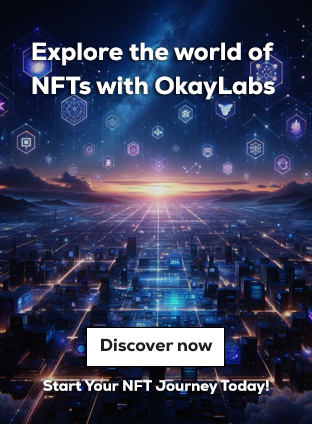Australia is gearing up to turbocharge its artificial intelligence (AI) sector with the creation of a new National AI Capability Plan aimed at expanding the country’s position in the rapidly growing global AI industry. As part of a broader effort to accelerate innovation, upskill the workforce, and attract investment, the Australian government has outlined ambitious plans to strengthen the country’s AI ecosystem.
The National AI Capability Plan: Australia’s Roadmap for Growth
On December 16, Ed Husic, the Australian Minister for Industry and Science, unveiled the plan, which focuses on fostering a more competitive and resilient AI sector. Husic’s statement highlighted the government’s commitment to upskilling the workforce, boosting AI literacy, and encouraging innovation in AI research, particularly through collaboration between businesses, universities, and local communities.
The National AI Capability Plan aims to explore key areas where AI can play a significant role in strengthening Australia’s critical infrastructure, securing supply chains, and driving technological advancement across industries. Husic remarked, “We will work closely with firms, and with communities and workers, to drive investment in our AI capabilities.”
A key feature of the plan will be a review of existing state and federal support mechanisms to assess whether they are effectively contributing to Australia’s AI goals or if they need to be adjusted to better serve the sector. This review will also help identify gaps in current AI education and training programs, with a special focus on upskilling the local workforce to meet the demands of the AI revolution.
Australia’s AI Industry: A Growing Force
According to the Australian Government Department of Industry, Science and Resources, there are approximately 650 AI companies operating across the country. Despite this promising number, Australia’s AI industry is still in its early stages compared to global leaders like the US, China, and Europe. Experts believe that AI and automation could contribute hundreds of billions of dollars to Australia’s GDP by 2030, representing a massive opportunity for economic growth and global competitiveness.
The government’s National AI Capability Plan is scheduled for completion by the end of 2025 following a consultation period. However, this timeline has raised some concerns among industry leaders, who argue that it may be too slow for such a fast-moving sector. The global AI market is expected to hit $826 billion by 2030, according to Statista, which underscores the urgency for countries like Australia to ramp up their efforts to capitalize on AI’s potential.
Industry Voices: Urging Faster Action
Simon Bush, CEO of the Australian Information Industry Association (AIIA), which represents the communications and technology industry, applauded the government’s move toward a National AI Capability Plan. However, he emphasized the need for a faster timeline. Bush believes that waiting until 2027 for funding could be too long, as the pace of innovation in AI is incredibly rapid, and Australia risks falling behind if it doesn’t act sooner.
“Australia has been a slow adopter of AI across its economy by global standards,” Bush said. He cited concerns around adoption fears, regulatory challenges, and the slow pace of policy development as factors holding the country back. “Australia requires a balanced approach to both ensuring AI regulation and guardrails protect citizens, but also having industry policy that supports AI innovation, investment, and adoption,” he added.
Challenges and Opportunities: Striking the Right Balance
The AI sector presents Australia with both opportunities and challenges. On one hand, the country has a wealth of potential in terms of talent, technological infrastructure, and research expertise. On the other hand, Australia faces significant hurdles, including regulatory concerns and the need to balance innovation with ethical considerations.
As AI technologies evolve rapidly, countries around the world are working to develop national strategies to stay competitive. For Australia, the key to success will be in creating an ecosystem where AI regulation is robust but not stifling, and where investment can flow freely into high-impact sectors like healthcare, agriculture, and finance. The government’s proposed National AI Capability Plan seeks to address these needs by laying the groundwork for a sustainable AI future.
Additionally, the focus on AI literacy is crucial. With AI expected to have a profound impact on nearly every industry, Australia’s workforce will need to be equipped with the necessary skills to thrive in an AI-powered economy. By fostering training programs and encouraging lifelong learning, the government hopes to build a workforce that is not only prepared for AI’s challenges but also poised to lead in AI innovation.
What’s Next? The Road Ahead for Australia’s AI Future
The creation of the National AI Capability Plan is a significant step toward ensuring that Australia doesn’t fall behind in the global AI race. By 2030, the AI industry could be one of the most important sectors driving the country’s economic future, and Australia is positioning itself to take advantage of this rapidly growing market.
However, the timeline for the plan’s full implementation remains a point of contention. While the government has set the end of 2025 as the target date for the plan’s completion, many experts believe that a more urgent approach is needed. With the global AI landscape changing at breakneck speed, Australia must act quickly to foster the right environment for AI to flourish.
The upcoming public consultation process will be key in shaping the future of AI in Australia, and industry leaders will be closely watching to see how the government responds to calls for faster action. If Australia can strike the right balance between regulation, investment, and innovation, it could become a leading player in the AI space, creating new economic opportunities and driving technological advancements for years to come.
For now, the National AI Capability Plan represents Australia’s commitment to positioning itself as a competitive force in the AI sector, but only time will tell if the country can move quickly enough to realize its full potential.



